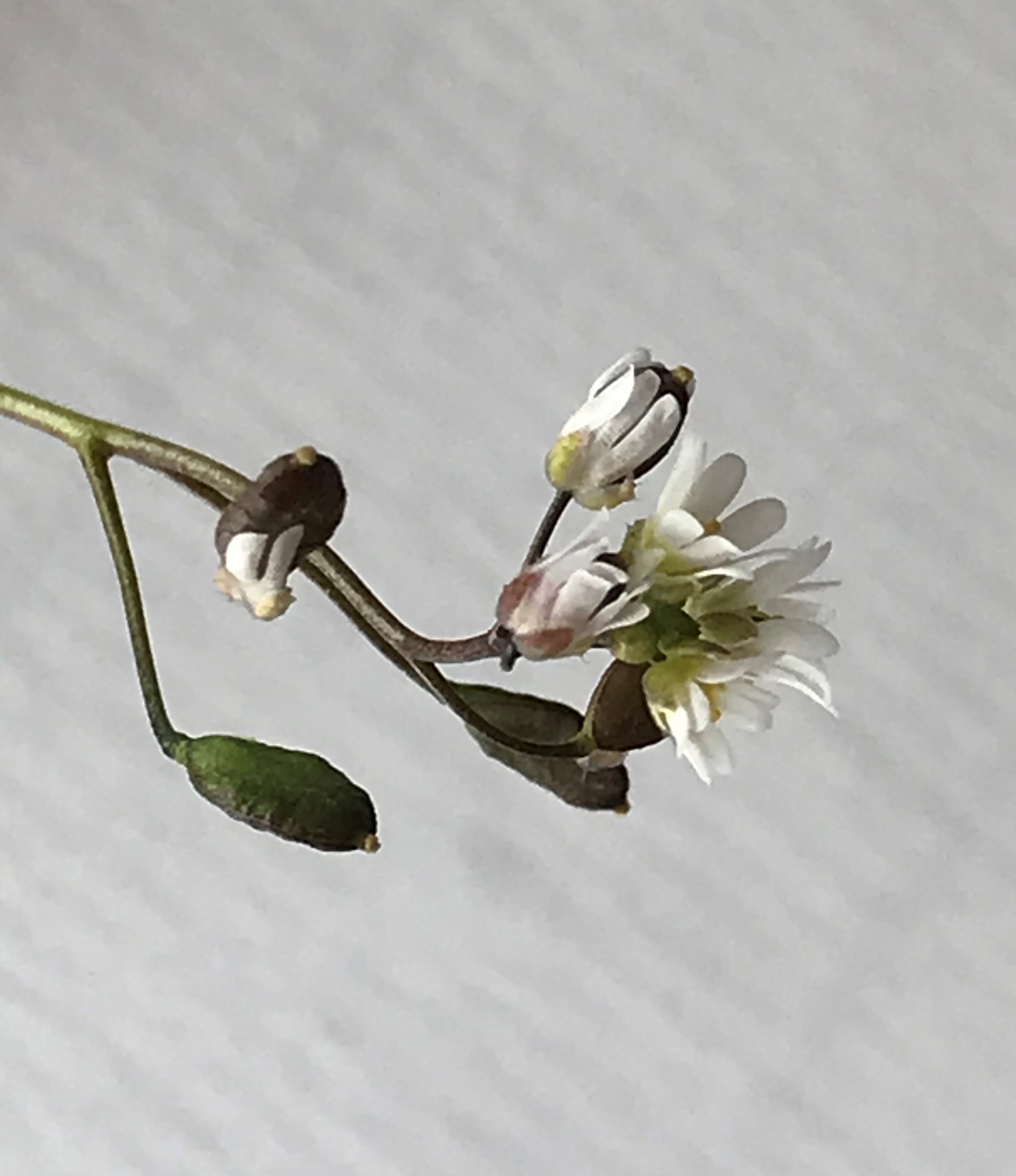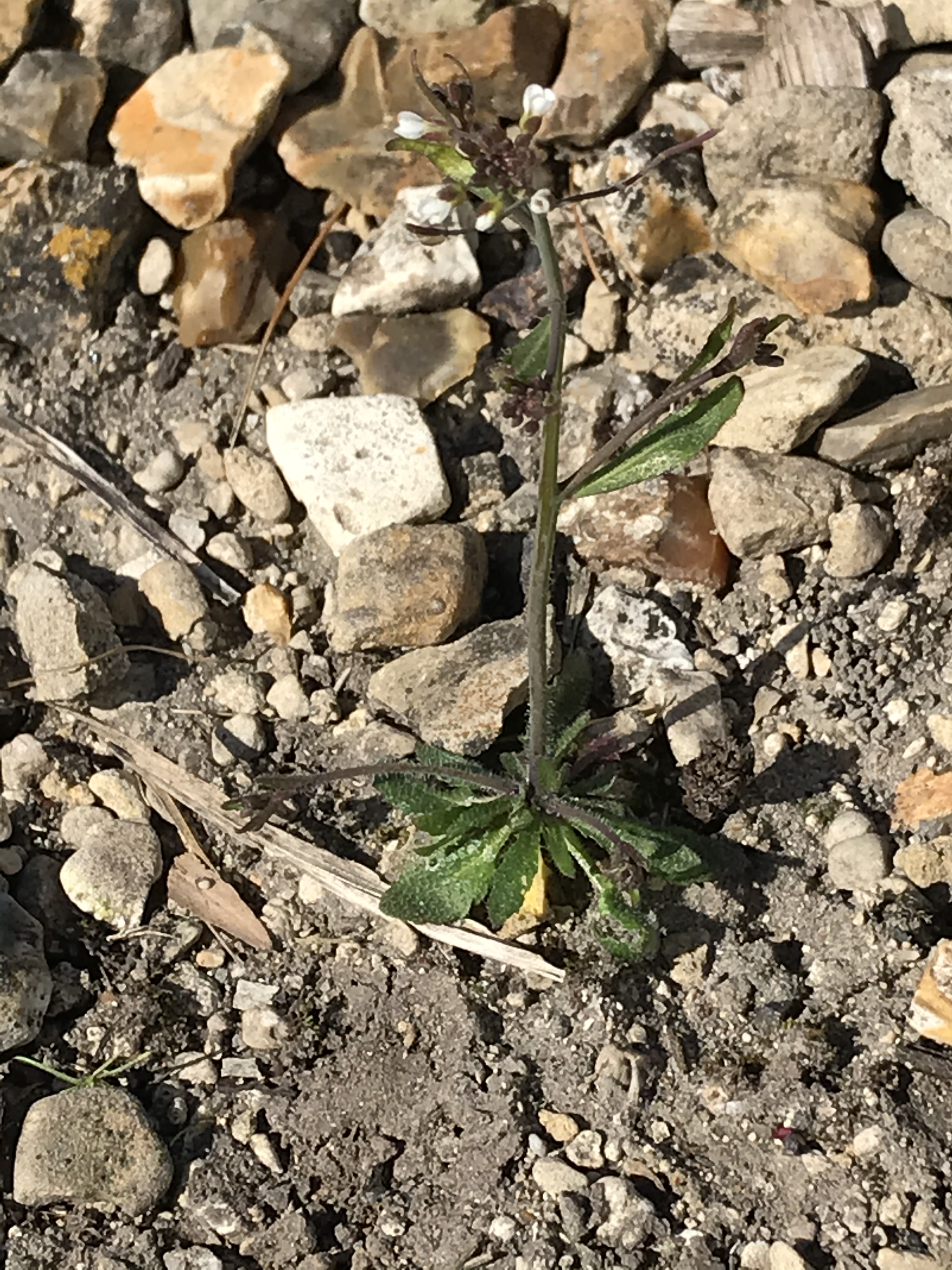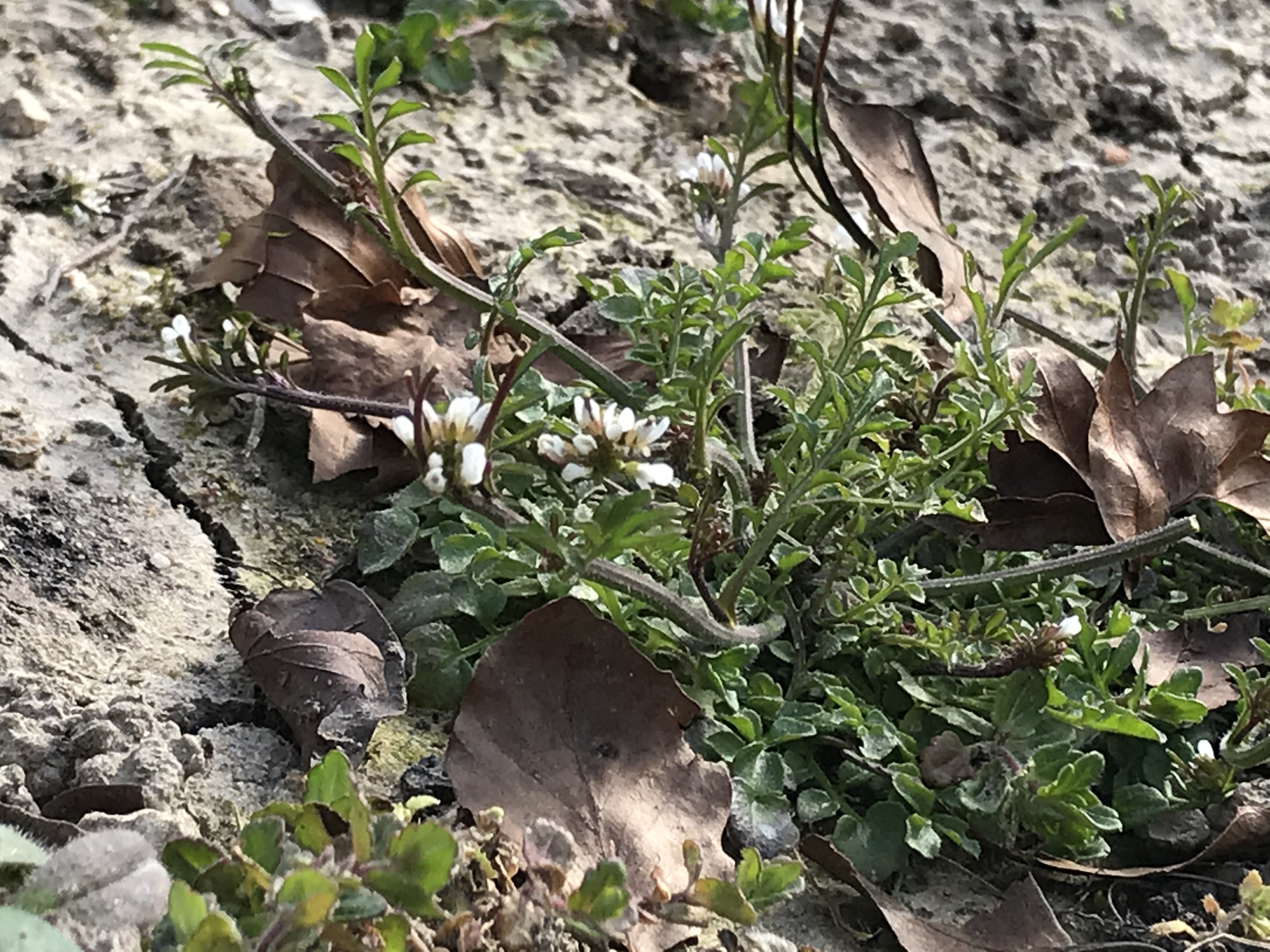The dry, gravel paths and gritty soils provide a good hunting ground for small, often over-looked plants. A serious botanist gets deeply into the minutae of flower structure and terminology. This is proving an essential, albeit frustrating part of improving skills and sussing out how different botanical books illustrate or describe features. I find this allows for useful cross checking as I like having a drawing of the whole plant as well as fine details of parts.

Green house sandy bed and gravel path – a good hunting ground for inconspicuous plants
To retain enjoyment with the subject, I swish back to my ‘jiz’ notes collated from numerous sources over the years and the richness associated with common names, literature, landscapes, medicinal uses and folklore. I find it easy to delve into books such as Flora Britannica by R Mabey and Scented Wild Flowers of Britain by R Genders – rather like a box of dark chocolate gingers!
From earliest days, our close association with plants has probably been based on astrology, religion, numerology, sympathetic magic and practical trial and error. Some of this has developed into effective, long used and well regarded ‘traditional medicine’. Such tradition is now supported by modern scientific analysis, such as confirming the efficacy of the chemical digitalis found in foxglove as a heart drug.
Three small white flowered plants of the Brassicaceae Family
The previous Family name of Crucifers referred to the cross shape of the petals. The key features are 4 free sepals, 4 free petals, usually 6 stamens and the fruits. The Family has over 3500 species worldwide with 300 or so in Britain and Ireland as a complex mix of natives and aliens at various stages of naturalisation. Many are opportunistic, fast growing and self pollinating annuals and can become successful weeds.
My 3 plants have softly hairy, dull green basal leaf rosettes where two have simple compound or entire leaves with the cress having a different pinnate form.
Common whitlow grass
The Erophila verna plants in the gravel drive are about 9cm tall and one of the first plants to flower in March. It has no stem or cauline leaves but deeply notched petals and oval flattened fruits. Medieval herbalists used the plant as treatment for whitlows, these being an abscess in the soft tissue near a finger or toe nail, and thus presumably the basis for the common name.

Closer look at notched petals and seed pod

Common whitlow grass
Thale cress or Common wall cress.
Arabidopsis thaliana does have cauline leaves, with tiny un-notched flowers and thin long fruits borne obliquely on spreading stalks. Flowering usually occurs in the spring and autumn.

Thale cress – small white flowered ‘crucifer’ shape with basal rosette and cauline leaves
There are numerous physiological races with different flowering and germination requirements; some producing seeds within 4 weeks of germination and thus completing an entire life cycle in 6 weeks. – speedy Gonzalez!
It has one of the smallest genomes of all flowering plants with its DNA completely sequenced in 2000 and functions are now assigned to its 27,000 genes and the 35,000 proteins they encode. The short life cycle and small genome size makes Thale cress a popular model organism for studies in plant biology and genetics. For example, as to how the processes of phototropism (growth response in response to a light stimulus) and chloroplast alignment (conduct photosnthesis) respond to the blue light receptors in the plant. One of these receptors, cryptochrome (a class of flavo proteins – very simply an enzyme & found in plants and animals including Man) is especially important regarding circadian rhythms and the plants’ responses to changes such as unusually early onset of darkness. Light responses have also been found in the roots. Flavo proteins are probably also linked to the sensing of magnetic fields. 
Thale cress was taken to the moon by the Chinese in January 2019 with seeds of potaties and silkworm eggs to see if plants will successfully carry out photosynthesis in a lunar environment. The idea is that the plants would support the silkworms with oxygen and the silkworms would in turn provide the plants with necessary carbon dioxide and nutrients through their waste.
Reproduced painting by Swedish botanist C.A.M Lindman 1856-1928. Public domain copyright)
Hairy bitter-cress or lamb’s cress
Cardamine hirsuta has a straight stem and only 4 stamens compared to the larger, wavy stemmed and 6 stamen wavy bittercress which tends to grow in damper habitat. I need to concentrate hard on gently pulling away petals to carefully count number of stamens as 2 can be small and over-looked. The leaves are used in eg salads giving a tangy peppery flavour.

Hairy bitter-cress with pinnate leaves
Like other fast growing annuals, there can be 2 generations in 1 year; one in spring and another in autumn. Seeds can spread up to 0.75m away from the parent plant by an explosive mechanism of the pod and gives rise to another common name of Flick weed. I contemplate how such mechanisms and propogation strategies evolved and if a similar action occurred relative to size and weight in say, hippos, one could have flying baby hippos travelling good distances – almost cartoon like!
It is easy to happily rummage for snippets of further knowledge. This leads to digging out the Thesaurus and OED to find word origins; ‘snippet’ is mid 16th Low German with ‘rummage’ late 15thC Old French. I further learn that lamb’s cress is called Stune in the Anglo Saxon 10th Century Nine Herbs Charm. This is a chant or poem known as a Lacnunga with a manuscript in the British Library.(Commons -Wikimedia – free to use)
These 9 plants were held in high regard to treat poison and infection. The others are mugwort, cockspur grass or betony (depending on interpretation of the anglo-saxon), plantain, mayweed, nettle, crab apple, thyme and fennel. There are prose instructions for preparation and use such as crushing the herbs and mixing the dust with old soap and apple juice and to sing the charm three times over during preparation and into the mouth, both ears and the wound prior to application.
These plant names are triggered a few days later by hearing on the Radio an evocative poem by Seamus Heaney about a patch of mint in a back yard that to a small boy looked like nettles. There’s also small pinky white flowers encased in soft green on the crab apple trees in the small orchard holding the promise of meringues of delicate coloured blossom.
0 Comments